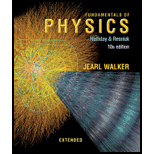
Fundamentals of Physics Extended
10th Edition
ISBN: 9781118230725
Author: David Halliday, Robert Resnick, Jearl Walker
Publisher: Wiley, John & Sons, Incorporated
expand_more
expand_more
format_list_bulleted
Textbook Question
Chapter 13, Problem 10Q
Figure 13-29 shows six paths by which a rocket orbiting a moon might move from point a to point b. Rank the paths according to (a) the corresponding change in the gravitational potential energy of the rocket-moon system and (b) the net work done on the rocket by the gravitational force from the moon, greatest first.
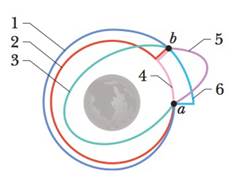
Figure 13-29 Question 10.
Expert Solution & Answer
Want to see the full answer?
Check out a sample textbook solution
Students have asked these similar questions
A mass M is split into two parts, m and M - m, which are then separated by a certain distance. What ratio m/M gives the least gravitational potential energy for the system?
SSM (a) What is the escape speed on a spherical asteroid whose radius is 500 km and whose gravitational acceleration at the surface is 3.0 m/s2? (b) How far from the surface will a particle go if it leaves the asteroid’s surface with a radial speed of 1000 m/s? (c) With what speed will an object hit the asteroid if it is dropped from 1000 km above the surface?
A 1000 kg spacecraft is approaching Jupiter (which is at the origin). The position of the spacecraft is given by the vector RSC = (0.0,-2.533) x 106km. The velocity is given by VSC= (+6.00, +8.00) km/sec. The mass of Jupiter, (MJ=318 MEarth) and MEarth = 5.97 x 1024 kg.
A) What is the potential and kinetic energy of the spacecraft (write each to 3 sig figs.) What is the total energy of the spacecraft? Call the total energy Ei.
B) Can it escape Jupiter? Justify your answer.
C) What is the angular momentum of the spacecraft around Jupiter? Call this Li.
Chapter 13 Solutions
Fundamentals of Physics Extended
Ch. 13 - In Fig. 13-21, a central particle of mass M is...Ch. 13 - Prob. 2QCh. 13 - In Fig. 13-23, a central particle is surrounded by...Ch. 13 - In Fig. 13-24, two particles, of masses m and 2m,...Ch. 13 - Prob. 5QCh. 13 - In Fig. 13-26, three particles are fixed in place....Ch. 13 - Rank the four systems of equal- mass particles...Ch. 13 - Figure 13-27 gives the gravitational acceleration...Ch. 13 - Figure 13-28 shows three particles initially fixed...Ch. 13 - Figure 13-29 shows six paths by which a rocket...
Ch. 13 - Figure 13-30 shows three uniform spherical planets...Ch. 13 - In Fig. 13-31, a particle of mass m which is not...Ch. 13 - ILW A mass M is split into two parts, m and M m,...Ch. 13 - Moon effect. Some people believe that the Moon...Ch. 13 - Prob. 3PCh. 13 - The Sun and Earth each exert a gravitational force...Ch. 13 - Miniature black holes. Left over from the big-bang...Ch. 13 - GO In Fig. 13-32, a square of edge length 20.0 cm...Ch. 13 - One dimension. In Fig. 13-33, two point particles...Ch. 13 - In Fig. 13-34, three 5.00 kg spheres are located...Ch. 13 - SSM WWW We want to position a space probe along a...Ch. 13 - Prob. 10PCh. 13 - As seen in Fig. 13-36, two spheres of mass m and a...Ch. 13 - GO In Fig. 13-37a, particle A is fixed in place at...Ch. 13 - Figure 13-38 shows a spherical hollow inside a...Ch. 13 - Prob. 14PCh. 13 - GO Three dimensions. Three point particles are...Ch. 13 - GO In Fig. 13-40, a particle of mass m1 = 0.67 kg...Ch. 13 - a What will an object weigh on the Moons surface...Ch. 13 - Mountain pull. A large mountain can slightly...Ch. 13 - SSM At what altitude above Earths surface would...Ch. 13 - Mile-high building. In 1956, Frank Lloyd Wright...Ch. 13 - ILW Certain neutron stars extremely dense stars...Ch. 13 - Prob. 22PCh. 13 - Prob. 23PCh. 13 - Two concentric spherical shells with uniformly...Ch. 13 - A solid sphere has a uniformly distributed mass of...Ch. 13 - Prob. 26PCh. 13 - Figure 13-42 shows, not to scale, a cross section...Ch. 13 - Prob. 28PCh. 13 - Prob. 29PCh. 13 - In Problem 1, what ratio m/M gives the least...Ch. 13 - SSM The mean diameters of Mars and Earth are 6.9 ...Ch. 13 - a What is the gravitational potential energy of...Ch. 13 - Prob. 33PCh. 13 - Prob. 34PCh. 13 - GO Figure 13-44 shows four particles, each of mass...Ch. 13 - Zero, a hypothetical planet, has a mass of 5.0 ...Ch. 13 - GO The three spheres in Fig, 13-45, with masses mA...Ch. 13 - In deep space, sphere A of mass 20 kg is located...Ch. 13 - Prob. 39PCh. 13 - A projectile is shot directly away from Earths...Ch. 13 - SSM Two neutron stars arc separated by a distance...Ch. 13 - GO Figure 13-46a shows a particle A that can he...Ch. 13 - a What linear speed must an Earth satellite have...Ch. 13 - Prob. 44PCh. 13 - The Martian satellite Photos travels in an...Ch. 13 - The first known collision between space debris and...Ch. 13 - Prob. 47PCh. 13 - The mean distance of Mars from the Sun is 1.52...Ch. 13 - Prob. 49PCh. 13 - Prob. 50PCh. 13 - Prob. 51PCh. 13 - The Suns center is at one focus of Earths orbit....Ch. 13 - A 20 kg satellite has a circular orbit with a...Ch. 13 - Prob. 54PCh. 13 - In 1610, Galileo used his telescope to discover...Ch. 13 - In 1993 the spacecraft Galileo sent an image Fig....Ch. 13 - Prob. 57PCh. 13 - Prob. 58PCh. 13 - Three identical stars of mass M form an...Ch. 13 - In Fig. 13-50, two satellites, A and B, both of...Ch. 13 - Prob. 61PCh. 13 - Prob. 62PCh. 13 - SSM WWW An asteroid, whose mass is 2.0 10-4 times...Ch. 13 - A satellite orbits a planet of unknown mass in a...Ch. 13 - A Satellite is in a circular Earth orbit of radius...Ch. 13 - One way to attack a satellite in Earth orbit is to...Ch. 13 - Prob. 67PCh. 13 - GO Two small spaceships, each with mass m = 2000...Ch. 13 - Prob. 69PCh. 13 - Prob. 70PCh. 13 - Several planets Jupiter. Saturn, Uranus are...Ch. 13 - Prob. 72PCh. 13 - Figure 13-53 is a graph of the kinetic energy K of...Ch. 13 - The mysterious visitor that appears in the...Ch. 13 - ILW The masses and coordinates of three spheres...Ch. 13 - SSM A very early, simple satellite consisted of an...Ch. 13 - GO Four uniform spheres, with masses mA = 40 kg,...Ch. 13 - a In Problem 77, remove sphere A and calculate the...Ch. 13 - Prob. 79PCh. 13 - Prob. 80PCh. 13 - Prob. 81PCh. 13 - Prob. 82PCh. 13 - Prob. 83PCh. 13 - Prob. 84PCh. 13 - Prob. 85PCh. 13 - Prob. 86PCh. 13 - Prob. 87PCh. 13 - Prob. 88PCh. 13 - Prob. 89PCh. 13 - A 50 kg satellite circles planet Cruton every 6.0...Ch. 13 - Prob. 91PCh. 13 - A 150.0 kg rocket moving radially outward from...Ch. 13 - Prob. 93PCh. 13 - Two 20 kg spheres are fixed in place on a y axis,...Ch. 13 - Sphere A with mass 80 kg is located at the origin...Ch. 13 - In his 1865 science fiction novel From the Earth...Ch. 13 - Prob. 97PCh. 13 - Prob. 98PCh. 13 - A thin rod with mass M = 5.00 kg is bent in a...Ch. 13 - In Fig. 13-57, identical blocks with identical...Ch. 13 - A spaceship is on a straight-line path between...
Additional Science Textbook Solutions
Find more solutions based on key concepts
The distance to the Andromeda galaxy, the nearest large neighbor galaxy of our Milky Way, is about 2.4 1022 in...
Essential University Physics (3rd Edition)
The interval of convergence of the power series ∑n=1∞ (−1)nxnn .
Mathematical Methods in the Physical Sciences
56. Global Positioning System. Learn more about the global positioning system and its uses. Write a short repo...
The Cosmic Perspective
42. A spider hangs by a strand of silk at eye level 30 cm in front of a plane mirror. You are 65 cm behind the ...
Conceptual Physical Science (6th Edition)
Solve the following equations using any method:
10. E = mc2, solve for c in terms of E and m.
College Physics (10th Edition)
Find the momentum of each object. 1. m = 2.00 kg, = 40.0 m/s
Applied Physics (11th Edition)
Knowledge Booster
Learn more about
Need a deep-dive on the concept behind this application? Look no further. Learn more about this topic, physics and related others by exploring similar questions and additional content below.Similar questions
- A system consists of five particles. How many terms appear in the expression for the total gravitational potential energy of the system? (a) 4 (b) 5 (c) 10 (d) 20 (e) 25arrow_forwardA space probe is fired as a projectile from the Earths surface with an initial speed of 2.00 104 m/s. What will its speed be when it is very far from the Earth? Ignore atmospheric friction and the rotation of the Earth. P11.26 Ki+Ui=Kf+Uf12mvi2+GMEm(1rf1ri)=12mvf212vi2+GME(01RE)=12vf2orvf2=v122GMEREandvf=(v122GMERE)1/2,vf=[(2.00104)21.25108]1/2m/s=1.66104m/sarrow_forwardThe position of four point masses m1=4 kg, M2=2 kg, m3=12 kg,and Mr=4 kg are given by (1,0),(0,2),(1,-1) and (1,3) ,arerespectively. In unit vector notation find the net gravitational force on . Calculate the total potential energy of the system.arrow_forward
- How much gravitational potential energy (in J) (relative to the ground on which it is built) is stored in an Egyptian pyramid, given its mass is about 8 ✕ 109 kg and its center of mass is 37.0 mabove the surrounding ground? J (b) What is the ratio of this energy to the daily food intake of a person (1.2 ✕ 107 J)?arrow_forwardHow much gravitational potential energy (in J) (relative to the ground on which it is built) is stored in an Egyptian pyramid, given its mass is about 6 ✕ 109 kg and its center of mass is 26.0 m above the surrounding ground? What is the ratio of this energy to the daily food intake of a person (1.2 ✕ 107 J)?arrow_forwardthe potential energy function U(r) of a projectile, plotted outward from the surface of a planet of radius Rs. If the projectile is launched radially outward from the surface with a mechanical energy of2.0 * 10^9 J, what are (a) its kinetic energy at radius r = 1.25Rs and (b) its turning point (see Module 8-3) in terms of Rs?arrow_forward
- A planet with a radius of 6.00 x 10^7 m has a gravitational field of magnitude 6.11 m/s^2 at the surface. What is the escape speed from the planet?arrow_forwardA lunar module weighs 12 metric tons on the surface of the Earth. How much work is done in propelling the module from the surface of the moon to a height of 50 miles? Consider the radius of the moon to be 1100 miles (from the center of the moon) and its force of gravity to be one-sixth that of Earth. (Round your answer to the nearest integer.)arrow_forwardA spaceship with m = 1.00 ✕ 104 kg is in a circular orbit around the Earth, h = 800 km above its surface. The ship's captain fires the engines in a direction tangent to the orbit, and the spaceship assumes an elliptical orbit around the Earth with an apogee of d = 3.00 ✕ 104 km, measured from the Earth's center. How much energy (in J) must be used from the fuel to achieve this orbit? (Assume that all the fuel energy goes into increasing the orbital energy and that the perigee distance is equal to the initial radius.)arrow_forward
- Zero, a hypothetical planet, has a mass of 4.1 x 1023 kg, a radius of 3.0 x 106 m, and no atmosphere. A 10 kg space probe is to be launched vertically from its surface. (a) If the probe is launched with an initial kinetic energy of 5.0 x 107 J, what will be its kinetic energy when it is 4.0 x 106 m from the center of Zero? (b) If the probe is to achieve a maximum distance of 8.0 x 106 m from the center of Zero, with what initial kinetic energy must it be launched from the surface of Zero?arrow_forwardA space vehicle is launched vertically upward from the Earth's surface with an initial speed of 7.35 km/s, which is less than the escape speed of 11.2 km/s. What maximum height does it attain?arrow_forwardHow much work is required to lift a 500-kg satellite to an altitude of 3⋅10^6 m above the surface of the Earth? The gravitational force is F=GMm/r^2, where M is the mass of the Earth, m is the mass of the satellite, and r is the distance between the satellite and the Earth's center. The radius of the Earth is 6.4⋅10^6 m, its mass is 6⋅10^24 kg, and in these units the gravitational constant, G, is 6.67⋅10^−11. Work= (include units)arrow_forward
arrow_back_ios
SEE MORE QUESTIONS
arrow_forward_ios
Recommended textbooks for you
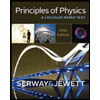 Principles of Physics: A Calculus-Based TextPhysicsISBN:9781133104261Author:Raymond A. Serway, John W. JewettPublisher:Cengage Learning
Principles of Physics: A Calculus-Based TextPhysicsISBN:9781133104261Author:Raymond A. Serway, John W. JewettPublisher:Cengage Learning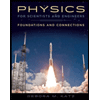 Physics for Scientists and Engineers: Foundations...PhysicsISBN:9781133939146Author:Katz, Debora M.Publisher:Cengage Learning
Physics for Scientists and Engineers: Foundations...PhysicsISBN:9781133939146Author:Katz, Debora M.Publisher:Cengage Learning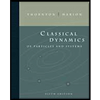 Classical Dynamics of Particles and SystemsPhysicsISBN:9780534408961Author:Stephen T. Thornton, Jerry B. MarionPublisher:Cengage Learning
Classical Dynamics of Particles and SystemsPhysicsISBN:9780534408961Author:Stephen T. Thornton, Jerry B. MarionPublisher:Cengage Learning

Principles of Physics: A Calculus-Based Text
Physics
ISBN:9781133104261
Author:Raymond A. Serway, John W. Jewett
Publisher:Cengage Learning

Physics for Scientists and Engineers: Foundations...
Physics
ISBN:9781133939146
Author:Katz, Debora M.
Publisher:Cengage Learning

Classical Dynamics of Particles and Systems
Physics
ISBN:9780534408961
Author:Stephen T. Thornton, Jerry B. Marion
Publisher:Cengage Learning
Mechanical work done (GCSE Physics); Author: Dr de Bruin's Classroom;https://www.youtube.com/watch?v=OapgRhYDMvw;License: Standard YouTube License, CC-BY